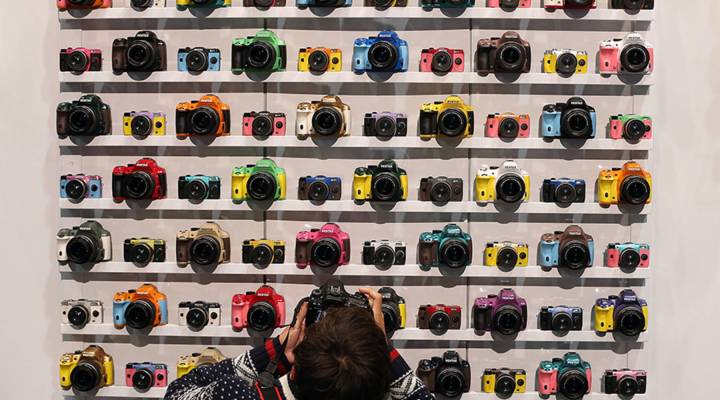
The creator economy is turning to the sharing economy for camera gear
The creator economy is turning to the sharing economy for camera gear

At the heart of the creator economy is video, whether it’s YouTube videos in a home studio or online documentaries or social videos. And at some point, everybody realizes you can only get so much production value with a phone. But high-end digital cameras and proper audio gear are expensive and in the past were more for moviemaking than for creating short, shareable web videos. Enter Kristina Budelis, co-founder and president of KitSplit, a startup that got $2 million in funding earlier this year. It lets creators and businesses who own camera and audio gear rent it out to others. Molly Wood talked with Budelis about how the creator economy is even changing how manufacturers design their products. The following is an edited transcript of their conversation.
Kristina Budelis: I think the fact that so many cameras have Wi-Fi now, where you can kind of connect your phone and share directly to Instagram or YouTube, is a sign of that. And I also see manufacturers who have historically catered towards people making feature films or commercials going downstream because of this growing segment of creators. One really interesting example of that is RED. So RED camera — you might not have heard of RED cameras, but a lot of the feature films that you’ve seen have been shot on RED cameras. They’re really high-end, amazing cameras starting at, like, $15,000 that have always catered towards big-budget productions. But this year, they introduced a camera phone, the RED Hydrogen One. It’s very much geared towards people who maybe have shot some stuff on their iPhone or DSLR and want to level up but still want something that is easy and fits in their pocket.
Molly Wood: Does it seem like creators get a return on [their] investment in better equipment?
Budelis: I think so, and I think that YouTube also knows this. They’ve invested a lot in creator spaces. So they have studio and gear for their high-end creators kind of all over the world. And I think that that’s because, you know, they see that better engagement follows better production value. And so they’re trying to help through the studio system. And we see KitSplit as a democratized studio that can help anyone anywhere, not just people with a certain amount of followers.
Wood: That’s really interesting, because I think there is this sense that the web itself was this big, democratizing force in terms of content, and that what people have learned over time is that it still has to look like, that quality still matters.
Budelis: Completely. And I think that there’s been a lot of investment and attention to democratization when it comes to distribution, so platforms like YouTube and Vimeo and Instagram that let you post your work, but less attention paid to helping creators as they’re making their work in that production process.
And now for the other tech news we’re following:
- Google CEO Sundar Pichai was likely to testify before the House Judiciary Committee on Wednesday, but it looks like the hearing will probably be postponed due to funeral services for former President George H.W. Bush, which is obviously very understandable.
- Politico noted yesterday that the tech industry is relieved about the trade truce between the United States and China. But CNBC noted that the White House statement about the deal barely mentioned some big issues for tech, like forced technology transfers where companies have to hand over tech secrets in order to do business in China. That’s a huge deal for companies expanding into China, but is also a huge deal for China, which is trying to dramatically kick-start its own innovation economy as part of its Made in China 2025 plan to become a technology powerhouse.
- Not everyone is totally chomping at the bit for a 5G phone right now considering how far away the infrastructure feels. And apparently Apple agrees. Bloomberg reported that Apple won’t do a 5G phone until 2020, according to people familiar with the company’s plans. But Samsung and Verizon said they’re going to bring a 5G phone to the United States in the first half of next year. Motorola also has a phone that runs on Verizon’s 5G network. So Apple could actually miss out on the big shift to 5G. Now we get to wait and see who’s guessing correctly about the market.
There’s a lot happening in the world. Through it all, Marketplace is here for you.
You rely on Marketplace to break down the world’s events and tell you how it affects you in a fact-based, approachable way. We rely on your financial support to keep making that possible.
Your donation today powers the independent journalism that you rely on. For just $5/month, you can help sustain Marketplace so we can keep reporting on the things that matter to you.


















